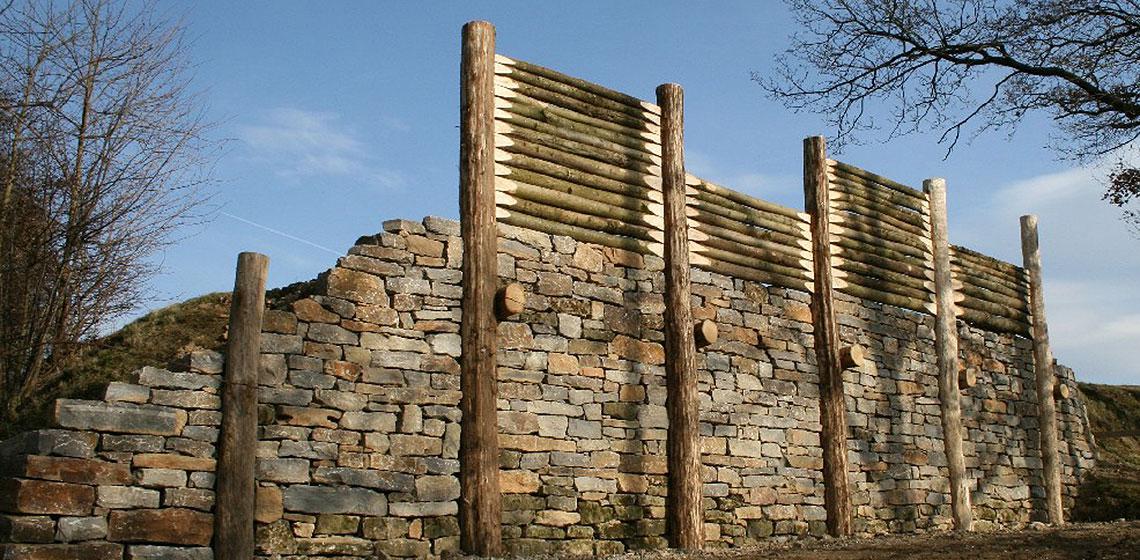
The Celtic oppidum of Finsterlohr-Burgstall belongs with its extension of 123 hectares and the well-preserved wall to the largest and most interesting fortifications from Celtic times.
It lies on a plateau protected from three sides over the Tauber Valley and was nevertheless surrounded with a 5 km long ring wall. This has been preserved on the endangered west side as a dam-like wall. Excavations showed that it was a post slot wall with an internally poured earth ramp.
The entrance to the north was a pincer gate with a gate street and a wooden gate. The size of the paved area, wall technology and pincer gate date the construction in the late Celtic period. The three construction phases of the wall, which are proven on the main wall, indicate a longer use, whereby the beginning and end of the settlement are just as unclear as the extent of the interior development. It is one of the city-like, fortified settlements in natural defensive position (oppidum), in the 2nd / 1st century ago throughout Celtic Central Europe. These were tribal and ruling centers as well as trade areas.
Only a part of the large areas that are cultivated and settled, other areas served as pasture and arable land, for the extraction and processing of natural resources and for the recording of humans and livestock in dangerous times. Numerous settlements and coin finds in the immediate vicinity suggest that the Oppidum Finsterlohr-Burgstall played a central role in the region. It is possible that the migration of Germanic tribes in the years 113-101 BC led to the end of the settlement. Only in the Middle Ages the area was used again by humans. Probably in the 13th century the hamlet "Burgstall" was founded here. The name means "abandoned castle" - as such, the investment was well regarded in the Middle Ages.
Embedded in a beautiful landscape, the monument today offers a unique symbiosis between culture and nature. About seven stations, the approximately 2.5 km long nature trail opens up the facility in its historical, functional and cultural significance.
Reconstruction
The wall on the shell limestone plateau above the Tauber had a total length of 5.1 kilometers and in earlier excavations three construction periods were detected. The 1.2-kilometer-long connection between the Schonach Gorge and the Hollerbach Gorge includes an area of 112 hectares with the steep descent to the Tauber. In the north was the entrance to the "Old Gate", a pincer gate. 2007, a second gate in the east direction Taubertal was excavated.
The 12-meter-long and 5.4-meter-high partial reconstruction stands on the open land to the hinterland and can be seen in the continuation well as a dam-like wall.
In the partial reconstruction, more than 100 tons of shell limestone were used, of which half was set by hand as a drywall. You only see one third of the processed stones. The oak posts were anchored so that they can be replaced later. Due to the weather this is necessary every 25 to 30 years. 7.8 meters of solid oak and ash are stuck in the posts, the anchoring and the cross and parapet timbers.
The Keltenverein invested about 460 working hours and was supported by modern equipment, regional construction companies, carpentry and blacksmiths.
The architect estimates the former stone volume of the 5.1 kilometer wall to 43,000 tons. With around 500 Celts, it would have taken 18 years for the earthwork and masonry work to complete the wall.
The association Keltisches Oppidum Finsterlohr- Burgstall e.V. offers guided tours in German for children and adults. On request also in costume.
Contact for guided tours: Ulrike Kammleiter, Tel: (+49) 74933 7825
